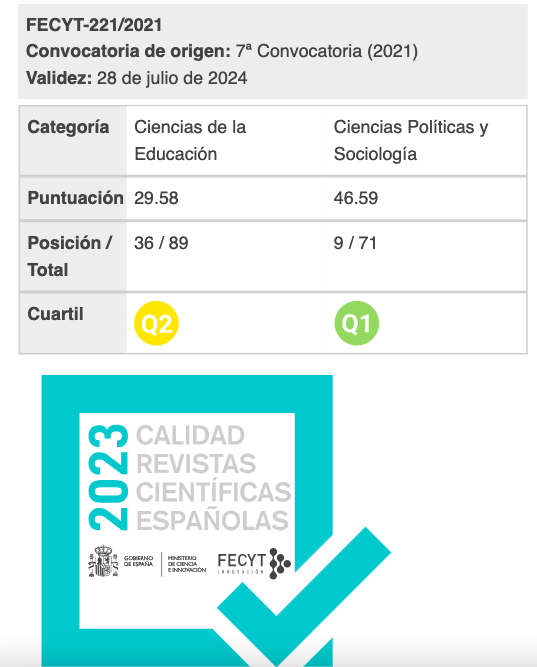Not Without Their Hijab: Being a Muslim Female Student at A Mid-Southern University
Keywords:
Downloads
Abstract
Scholars might agree or disagree on the best definition of Islamophobia, but no one can deny Islamophobia is a very real and dangerous phenomenon in American society. This research examined veiled Muslim students’ experiences and perceptions of a typical American university campus in the aftermath of the most recent terrorist attacks. The findings demonstrated that students perceived the campus community to be tolerant and welcoming. On the other hand, students reported off-campus incidents that speak of ignorance and intolerance of Muslim students. The study provides higher education institutions with insights on how to increase cultural awareness on-and-off campus to correct stereotypes and make Muslim students feel welcomed in their communities. The authors hope to create awareness among students and community members; thereby helping to debunk the stereotypes, and creating a safe and diverse campus for all students. Educators and college leaders can use this knowledge to combat stereotypes and biases; thus making campus a safer and more welcoming environment for all students.
Downloads
References
Abu-Lughod, L. (2002). Do Muslim women really need saving? Anthropological reflections on
Google Scholar Crossrefcultural relativism and its others. American Anthropologist, 104(3), p.783-790.
Google Scholar CrossrefAhmed, L. (1992). Women and Gender in Islam: Historical Roots of a Modern Debate. New
Google Scholar CrossrefHaven: Yale University Press.
Google Scholar CrossrefAllen, C. (2010). Islamophobia. Burlington VT: Ashgate Publishing Company
Google Scholar CrossrefAllen C. (2007). The ‘first decade of Islamophobia: 10 years of the Runnymede Trust report
Google Scholar Crossref“Islamophobia: a challenge for us all”. P 1-29.
Google Scholar CrossrefBeshir, S. (2007). A Light at the End of the Tunnel: The Stories of Muslim Teens. Beltsville,
Google Scholar CrossrefMD: Amana Publication
Google Scholar CrossrefBleick, E. (2011). What is Islamophobia and how much is there? Theorizing and measuring and
Google Scholar Crossrefemerging comparative concept. American Behavioral Scientist, 55(2) p.1581-1600.
Google Scholar CrossrefDOI:10.1177/0002764211409387
Google Scholar CrossrefBroomfield, M. (2016, March 28). Far-right protestors in Brussels confronted and intimated Muslim women on a peace March. The Independent, http://www.independent.co.uk/news/world/europe/400-fascist-protesters-in-brussels-square-confronted-and-intimidated-muslim-women-a6956196.html
Google Scholar CrossrefDroogsma, R. A. (2007). Redefining hijab: American Muslim women’s standpoint on veiling.
Google Scholar CrossrefJournal of Applied Communication Research, 35(3), p.294-319. DOI:10.1080/00909880701434299
Google Scholar CrossrefGalman, S. C. (2013). Un/covering: Female religious converts learning the problems and
Google Scholar Crossrefpragmatics of physical observance in the secular world. Anthropology & Education Quarterly, 44(4), p 423-441. DOI:10.1111/aeq.12040
Google Scholar CrossrefGhaneaBassiri, K. (2013). Islamophobia and American history: Religious stereotyping and out-
Google Scholar Crossrefgrouping of Muslims in the United States. In C. W. Ernst (Ed.), Islamophobia in America: The anatomy of intolerance (pp. 53-74). New York: Palgrave MacMillan
Google Scholar CrossrefGottschalk, P., & Greenberg, G. (2013). Common heritage, uncommon fear: Islamophobia in the
Google Scholar CrossrefUnited States and British India, 1687-1947. In C. W. Ernst (Ed.), Islamophobia in America: The anatomy of intolerance (pp. 21-51). New York: Palgrave MacMillan.
Google Scholar CrossrefGottschalk, P. & Greenberg, G. (2008). Islamophobia: Making Muslims the Enemy. Lanham:
Google Scholar CrossrefMD Rowman & Littlefield Publishers.
Google Scholar CrossrefHaddad, Y.Y. (2007). The post-9/11 Hijab as Icon* Sociology of Religion, 68(3), p.253-267.
Google Scholar CrossrefHaddad, Y.Y, Smith, J.I. & Moore, K.M. (2006). Muslim Women in America: the Challenge of
Google Scholar CrossrefIslamic Identity Today. Oxford: University Press.
Google Scholar CrossrefHammer, J. (3013). Center stage: Gendered Islamophobia and Muslim women. In C. W. Ernst
Google Scholar Crossref(Ed.), Islamophobia in America: The anatomy of intolerance (pp. 107-144). New York: Palgrave MacMillan
Google Scholar CrossrefHoodfar, H. (1993). The veil in their minds and on our heads: The persistence of colonial
Google Scholar Crossrefimages of Muslim women. Resources for Feminist Research, 22 (3/4) p5-18.
Google Scholar CrossrefKhan, S. (2002). Aversion and Desire: Negotiating Muslim Female Identity in the Diaspora.
Google Scholar CrossrefWomen Press. Ontario, Ca.
Google Scholar CrossrefSaid, E. (1981). Covering Islam. New York: Pantheon.
Google Scholar CrossrefSbaiti N, (2010). If the devil taught French: Strategies of language and learning in French mandate Beirut. In Osama Abi Mershed, Trajectories of education in the Arab World. (pp. 59-83) NY: Routledge.
Google Scholar CrossrefShabana, M. (2014). Muslim American Women on Campus: Undergraduates Social Life and
Google Scholar CrossrefIdentity. Chapel Hill: The University of North Carolina Press.
Google Scholar CrossrefPeople For the American Way (PFAW), The Right Wing Playbook on Anti-Muslim Extremism.
Google Scholar CrossrefThe Runnymede Trust Report Summary (1997). Islamophobia: A challenge for us all. London:
Google Scholar CrossrefRunnymede Trust.
Google Scholar CrossrefThomas, D. (2015, December 7). What it’s like to be a Muslim women after a terrorist attack. The Los Angeles Times, http://www.latimes.com/local/la-me-ln-women-anti-muslim-harassment-20151206-story.html
Google Scholar CrossrefYoshino, K. (2006). Covering: the Hidden Assault on our Civil Rights. New York: Random
Google Scholar CrossrefHouse.
Google Scholar CrossrefDownloads
Published
Almetric
Dimensions
How to Cite
Issue
Section
License
All articles are published under Creative Commons copyright (CC BY). Authors hold the copyright and retain publishing rights without restrictions, but authors allow anyone to download, reuse, reprint, modify, distribute, and/or copy articles as the original source is cited.















